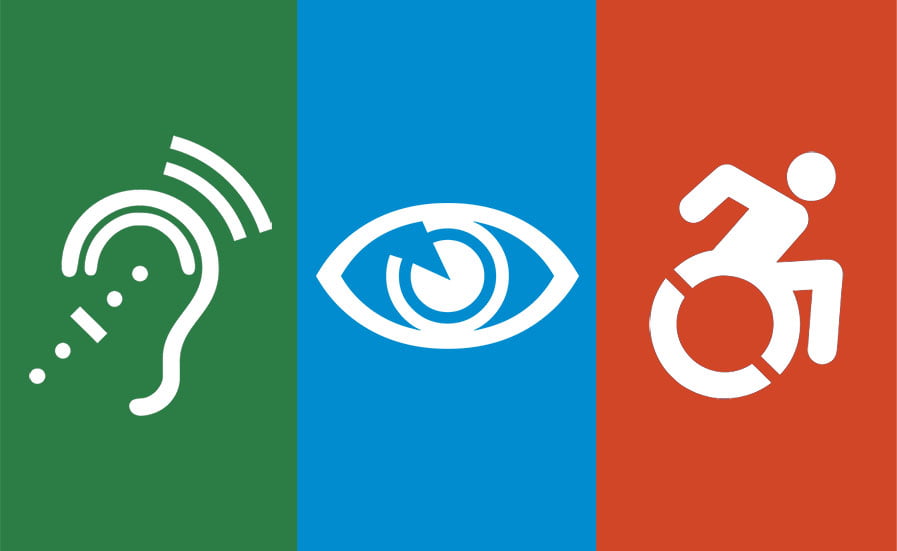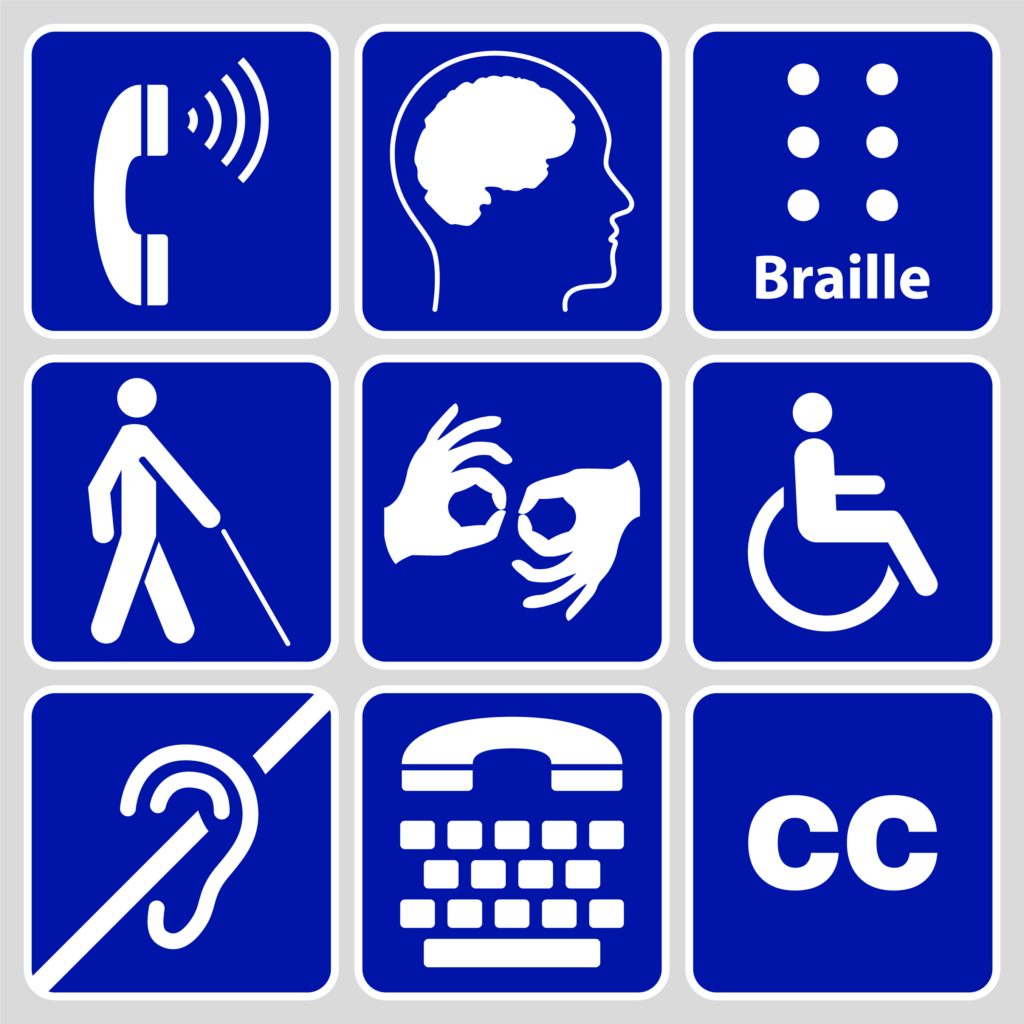
Table of Contents
ADA Website Compliance – Americans with Disabilities Act (1990)
Americans with Disabilities Act (ADA) is a civil rights law passed in the year 1990 that prohibits discrimination on the basis of disability. The act covers both mental and physical disabilities.
It is similar to the Civil Rights Act of 1964 which prohibits discrimination on the basis of race, religion, sex, color, and national origin.
It also took inspiration from Section 504 of the Rehabilitation Act of 1973. The act became law with the signing of US President George H.W. Bush on July 26, 1990.

The Act includes measures that ensure equal opportunities for people who have disabilities. It thus cannot be denied employment if qualified, based on their mental or physical condition.
The ADA was a major victory for disabled people as it opened new opportunities for them. It was previously denied or did not have the necessary ecosystem to support those opportunities.
The major implications of the ADA are for government and public institutions, including businesses that deal with the public. The act requires them to create an ecosystem within their ‘work walls’ that supports people with disabilities.
This includes giving them a fair chance at job opportunities by creating disabled-friendly infrastructure on their premises and ensuring proper working conditions.
What does ADA Mean To You And Your eCommerce Website?
The ADA bill contains titles that clear the air on businesses under the ADA law.
Under Title 1 of the ADA, any business with at least 15 workers and that works for 20 or more weeks every year falls under the ADA law.
Title III makes the case for businesses that fall under the ‘places of public accommodation’, such as hotels, restaurants, transport providers, etc.
Hence, businesses that are places of public accommodation are required to comply with the ADA law.
When the Americans with Disabilities Act was passed into law, there were some apprehensions from many quarters over its vague nature and imprecise framework.
However, the intention of the bill was never doubted. President George H.W. Bush made it very clear to the business community that they had crafted this bill with great care. It has all the elements that look into matters such as false litigation, etc.
Now, with the turn of the century, the way of doing business has completely changed. Businesses are not done only on physical land but also through the internet.
The original ADA talks of removing physical barriers from business premises or places of public accommodation to make things easier for the disabled community.
However, what went missing from the act was the mention of ‘ADA Website Compliance’ as the internet was not a big thing in those days.
But the act did mention the term ‘Places of Public Accommodation’. Hence, in the broader context, it applies to businesses that operate through websites and mobile applications.
As more than a billion-plus population spend time on the internet, it is assumed (not legally) that the websites also fall under the purview of places of public accommodation.
Thus, they need to be disability-friendly and have a design and layout that caters to the needs of people with disabilities.
This interpretation of the phrase ‘places of public accommodation with regard to websites has led to many lawsuits filed against website owners that don’t provide a proper mechanism to access their content by disabled people.
Currently, this issue has become a serious concern for website owners. This is not because they must redesign their website to make it disability-friendly. It’s because there is no legal clarity on the subject.
On the other hand, it’s no secret that the world is becoming increasingly digital daily, and websites are the structural framework on which this digital revolution stands today.
Hence it becomes imperative to provide accessible content to our disabled friends.
Yes, it will cost a little, depending on the size and pages of your website. But in the end, it will gain you positive recognition among the large disabled community. And yes, you can save yourself from those ‘lawsuits’.
How to Make Your eCommerce Website ADA Compliant?
Currently, there are no guidelines for commercial entities on how to make their websites accessible to the disabled community. In other words, presently, there is no framework to look at for making a website ADA compliant.
The only hint one can consider is the federal websites, which are seen as disability-friendly. So, taking federal websites as the model, you can start redesigning your website for disabled people.
Here are some ways to make sure that your website provides ‘reasonable accessibility to people with disability.
- Pair Images, Videos, and Audio Files with Supportive Alt Tags

Many users of your website can be visually or hearing impaired. In order to help them access your site’s content, you can apply alt tags in support of images and graphics on your website.
Using the screen reader tool will make visually impaired people understand what those images convey.
Similarly, supporting text or subtitles with audio files and video content can help a hearing-impaired person access the information in those audio/visual files.
In short, you must ensure that your site’s content is also available in text format so that a differently-abled person can access that content through screen-reading tools.
- Ensure Better Color Contrast Ratio

Your website page color also matters. Many users find it difficult to read page content if there is no appropriate contrast between the text and background colors.
Imagine how much more difficult it can be for people who already have color issues. So, ask your web designer to fix this issue.
- Design Keyboard Friendly Website

Your website should be fully functional when used with a keyboard. At the same time, essential elements must be highlighted and showcased differently.
Keyboard-friendly websites are especially helpful to people who can’t use a mouse. You can check your own website’s accessibility for keyboard users by not using the mouse.
If your site can produce results, then it’s fine. But if it is not producing results, redesign it to make your website perform navigation functions through the keyboard.
- Create a ‘Suggestion Box’ Column on Your Website

As you are making your website disability-friendly, why not add a column named ‘suggestion box’ to get feedback from the disabled community? This will help you to invest your time and money in the right direction, as the feedback directly comes from people with disabilities.
- Pay Heed To WCAG Guidelines

WCAG is a Web Content Accessibility Guideline. It is a consortium of individuals from the tech world. Organizations with the single motive of ensuring web content accessibility to the disabled community.
It has formulated a set of principles to test a website’s accessibility. These principles are perceivable, operable, understandable, and robust.
Conclusion
Web Accessibility is still in its nascent form. At the time of writing this article, there is no full-fledged law that governs this subject. However, as said earlier, web accessibility will play a key role in this digitized age. Therefore, the wisdom lies in discussing the early lead and making your e-commerce website disability-friendly.
It will improve your site’s credibility and win many friends from the large disabled community. For more updates on this matter, continue visiting our site or contact us at Metizsoft Solutions.
AboutManthan Bhavsar
Related Posts
Tighten Your Security Before Your WordPress Site Get Hacked
WordPress is undoubtedly the most popular user-friendly blogging platform and CMS system, having an extensive plugin...
Top 10 Shopify App to Grow your Store (Updated in 2022)
“E-commerce business is Human to Human and Conversion Rate is the King.” The essential thing in an E-commerce...

